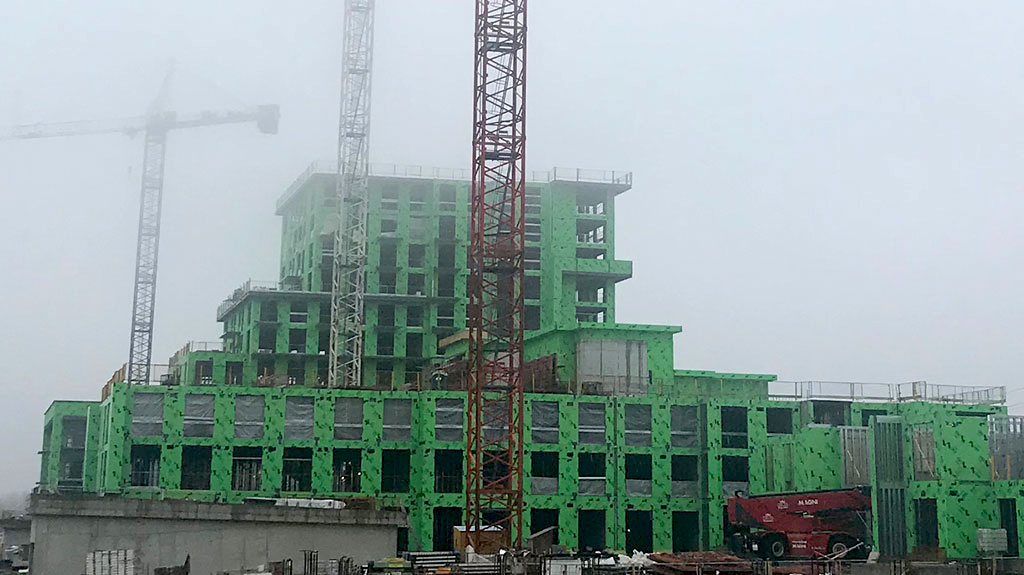OTTAWA — Nova Scotia and Ontario are expected to lead the way in construction job creation in the next five years in Eastern Canada according to the latest workforce forecasts published by BuildForce Canada, while Newfoundland and Labrador will be the laggard in the region.
The prognostications are contained in BuildForce’s 2021–2030 ��������ion and Maintenance Looking Forward report, released in stages the week of March 22.
BuildForce executive director Bill Ferreira noted Newfoundland and Labrador will see a modest recovery through 2021, but long-term growth will be constrained. The forecasts for New Brunswick and Nova Scotia, meanwhile, will be bolstered by in-migration trends.
Prince Edward Island was the only province of the four in Atlantic Canada to experience a rise in construction employment in 2020, and that increase is expected to continue through 2022.
Quebec’s market is expected to rebound from the pandemic in 2021 and grow through 2024 on the strength of private-sector spending and strong levels of government investment. Ontario will be driven by a growing pipeline of major infrastructure projects across all regions. An additional recovery in commercial and industrial investment will bring labour demands to a peak in 2026 in the province.
Nationally, construction employment is expected to rise by 64,900 workers over the next decade, an increase of six per cent over 2020 workforce levels.
“The unevenness with which provinces and even regions within those provinces will experience construction growth over the forecast period suggests that intra- and interprovincial mobility, as well as drawing workers from other industries, will be key to meeting construction demands,” said Ferreira.
Variations in construction employment in the six eastern provinces over the next five years range from a drop in jobs of 14.9 per cent forecast for Newfoundland and Labrador to an increase of 8.4 per cent in Nova Scotia. New Brunswick is expected to lose 4.6 per cent of its construction jobs in that period, P.E.I. will gain 1.6 per cent, Quebec is forecasted to gain 4.4 per cent and it is predicted that Ontario will gain 8.3 per cent more jobs in the sector in the next five years.
In the non-residential sector, Nova Scotia is forecasted to gain 13 per cent more jobs in the next five years, Ontario will jump 10 per cent, Quebec will experience a hike of nine per cent and P.E.I. is expected to see a spike in jobs of six per cent.
New Brunswick is expected to lose 12 per cent of its non-residential construction jobs in the next half decade, with Newfoundland and Labrador again following the others with an expected drop of 26 per cent.
Among other regional highlights:
- ��������ion and maintenance activity in Nova Scotia is expected to increase between 2021 and 2023, driven by strong and broad-based demand across the province’s residential and non-residential sectors.
“��������ion activity in Nova Scotia was only moderately hindered by the impacts of COVID-19 in 2020, and the negative effects were largely confined to the residential and commercial markets,” said Ferreira. “An anticipated recovery in the residential sector, alongside a ramp-up in requirements related to numerous major health care, educational, roadwork and engineering projects, is expected to drive a strong expansion in construction employment across 2021 and 2022.”
- BuildForce reported the COVID-19 pandemic hit Newfoundland and Labrador disproportionately hard in 2020. Instability in the oil and gas markets caused many existing and proposed projects to be cancelled or delayed, dampening current and future construction employment in the province.
“The resulting reductions in business investment, exports and consumer spending reverberated across all sectors of construction,” Ferreira said.
- ��������ion demand in P.E.I. will be driven by a wave of public-sector investments alongside elevated levels of new-housing construction and increasing industrial, commercial and institutional activity in the wake of the COVID-19 pandemic.
- The sustained increase in immigration in New Brunswick means demand for new housing will remain at current near-high levels for most of the forecast period. The completion of several civil and institutional infrastructure projects, in contrast, will reduce demand for non-residential employment in the near term, though heavy-industrial maintenance requirements may create seasonal recruitment challenges for some specific trades.
- In the spring of 2020, Quebec’s construction sector endured some of the severest COVID-19 restriction measures, but activity is expected to rebound, as growth in industrial, commercial and institutional (ICI) building construction is set to increase as the recovery resumes. The government is investing in education, health care, public transit, road, highway and bridge construction.
Besides infrastructure spending in Ontario, significant investments in the health sector and the refurbishment of Ontario’s nuclear reactors will lead growth in the next five years.











Recent Comments
comments for this post are closed